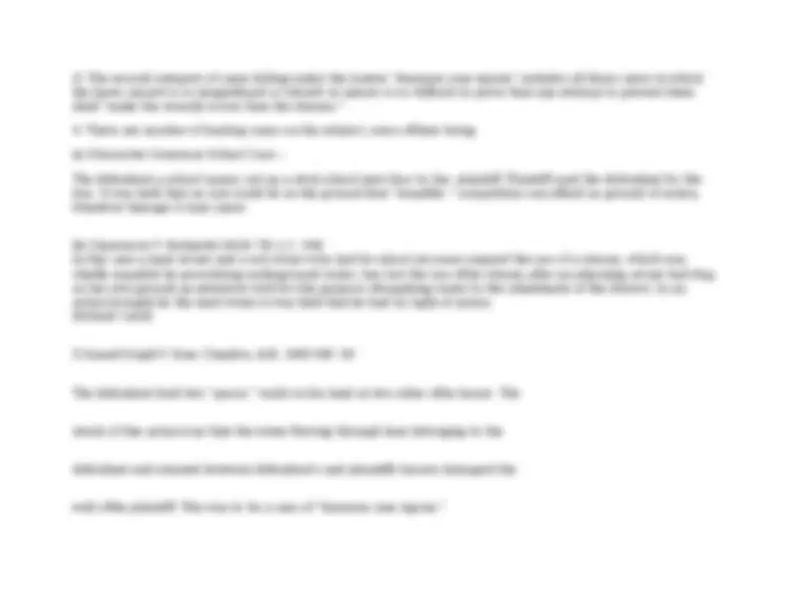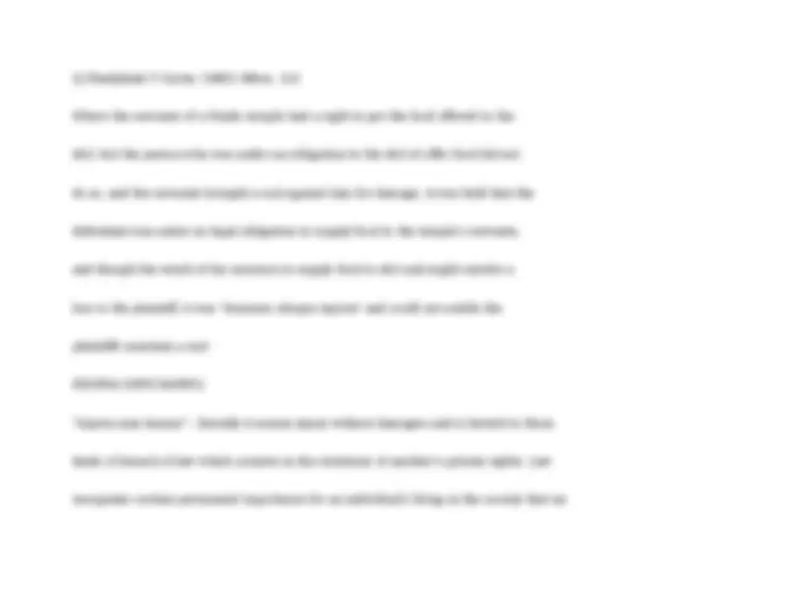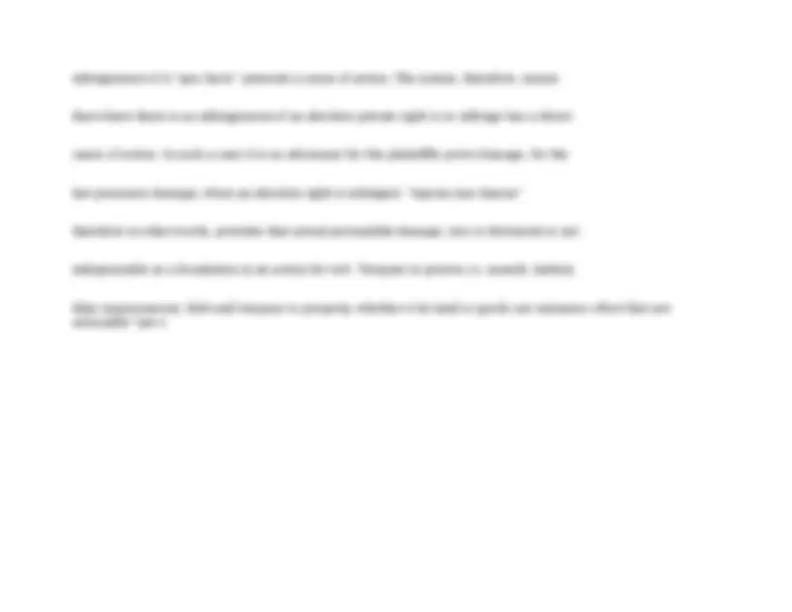





Study with the several resources on Docsity

Earn points by helping other students or get them with a premium plan


Prepare for your exams
Study with the several resources on Docsity

Earn points to download
Earn points by helping other students or get them with a premium plan
Community
Ask the community for help and clear up your study doubts
Discover the best universities in your country according to Docsity users
Free resources
Download our free guides on studying techniques, anxiety management strategies, and thesis advice from Docsity tutors
Damnum sine injurya and injurya sine damnum
Typology: Exercises
1 / 5

This page cannot be seen from the preview
Don't miss anything!




All wrongs are mischievous in the eyes of law but the converse is not true. There may be cases in which damage is caused knowingly and willfully but the law will not hold the wrongdoer accountable for it. The law ignores the harm of his nature because no legal injury is caused. Such cases are covered under the maxim - damnum sine injuria. The word "injury” signifies “an act contrary to law" or violation of legal right. The maxim means that damage without “injuria ” “infringement ofright” is not actionable. Mereloss in money or money’s worth does not itself constitute legal damage and is not a good ground of action. There are many acts, which though harmful, give right of action to him who suffers their effects. Damage so done and suffered is called "damnum sine injuria” i.e. actual and substantial loss without infringement of any legal right and in such cases no action lies. Hence the maxim implies that loss or detriment is not a ground of action,
unless it is the result of a species of a wrong ofwhich the law takes cognizance. Thus ifI have a mill, and my neighbour sets up another mill, and thereby the profits ofmy mill fall off, I cannot bring an action against him eventhough, I have suffered damage. SALMOND’S CLASSIFICATION SALMOND classifies the principal cases of “damnum sine injuria ” as follows: i) Where the harm is caused by a persons’ lawful exercise of his own right, as in thecase ofloss inflicted on individual traders by competition in trade. ii) Where the defendant exercises alright to his property.iii) Where the damage is caused by a man acting under necessity. iv) Where the harm complained is too trivial, too indefor effective legal recogniton. finite or too difficult to prove v) Where the harm caused is of such a nature that the law considers it expedient toconfer any right ofpecuniary redress upon the individual’s injury. According to SALMOND, the cases covered under the maxim “damnum sine injuria”can be grouped in two categories, as under:'
2j Dhadphale V Gurav, (1881) 6Bom. 122 Where the servants of a Hindu temple had a right to get the food offered to the idol, but the person who was under an obligation to the idol of offer food did not do so, and the servants brought a suit against him for damage, it was held that the defendant was under no legal obligation to supply food to the temple’s servants, and though the result of his omission to supply food to idol and might involve a loss to the plaintiff, it was “damnum absque injuria" and could not entitle the plaintiffs maintain a suit. INJURIA SINE DAMNQ “Injuria sine damno" - literally it means injury without damages and is limited to those kinds of breach of law which consists in the violations of another’s private rights. Law recognizes certain permanent importance for an individual’s living in the society that an
infringement of it “ipso facto” presents a cause of action. The maxim, therefore, means that where there is an infringement of an absolute private right is so infringe has a direct cause of action. In such a case it is no ndcessary for the plaintiffto prove damage, for the law presumes damage, when an absolute right is infringed. “Injuria sine damno” therefore in other words, provides that actual perceptible damage, loss or detriment is not indispensable as a foundation in an action for tort. Trespass to person i.e. assault, battery, false imprisonment, libel and trespass to property, whether it be land or goods are instances oftort that areactionable "per s